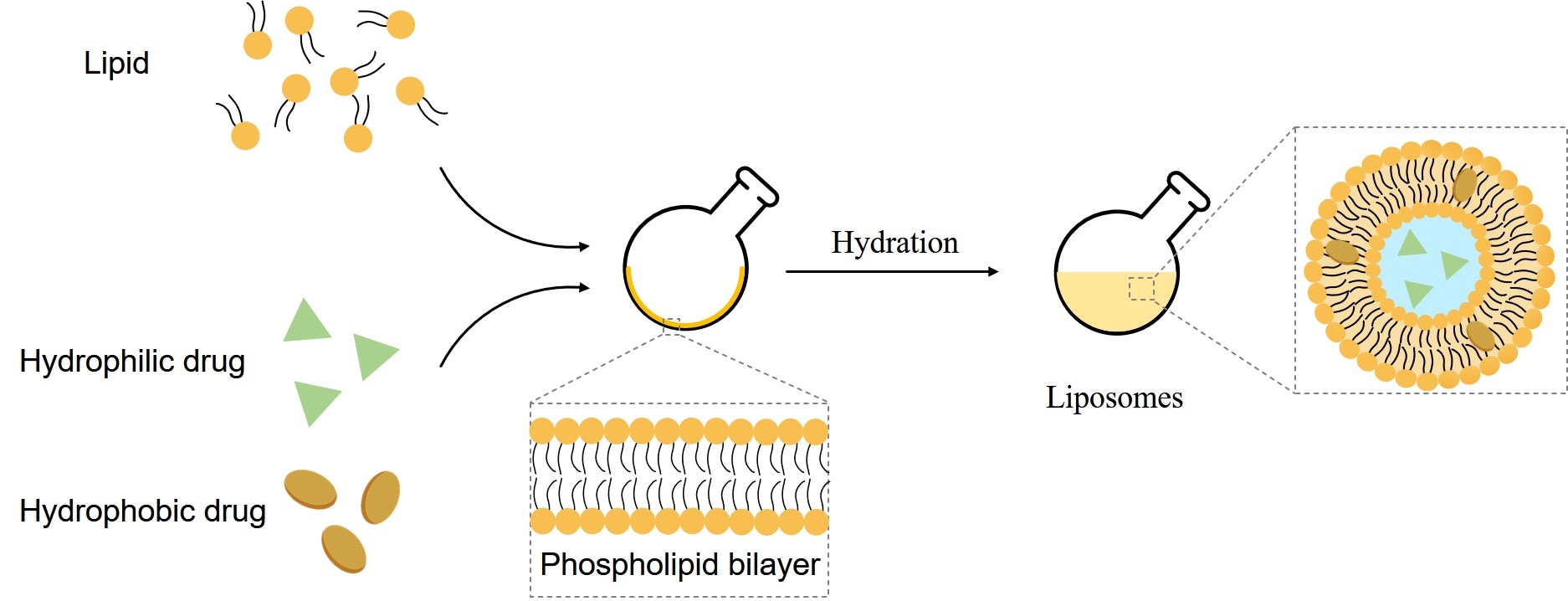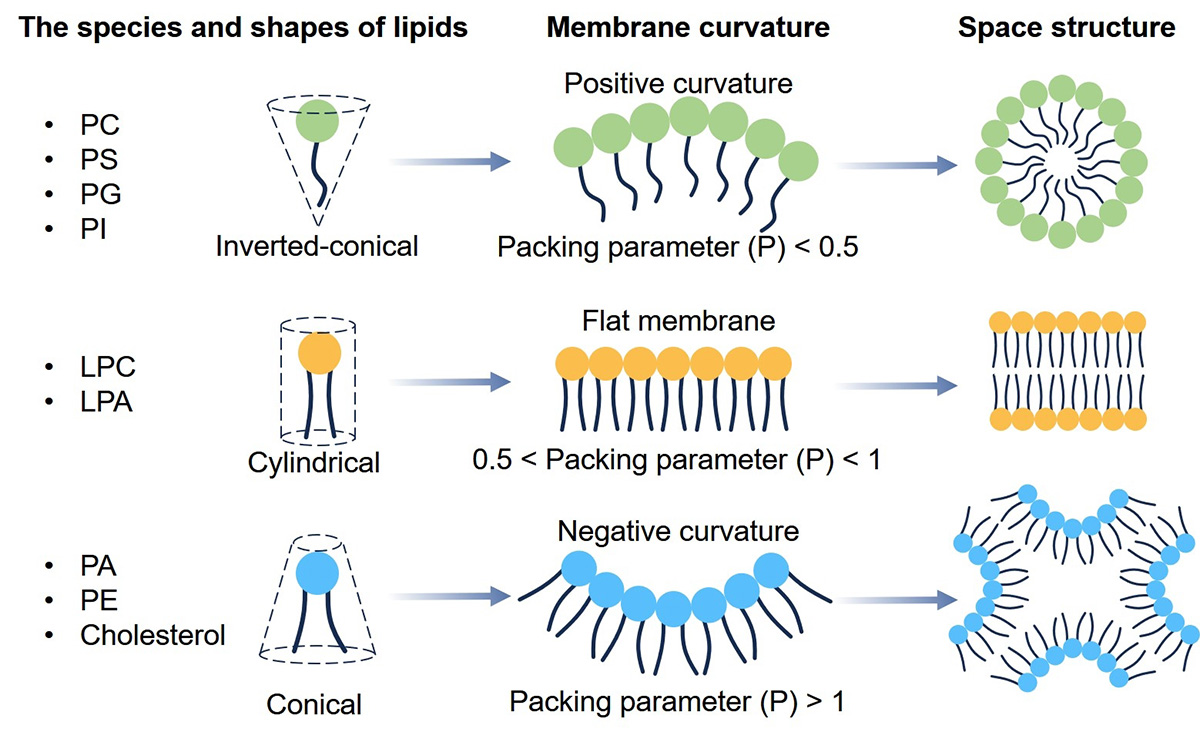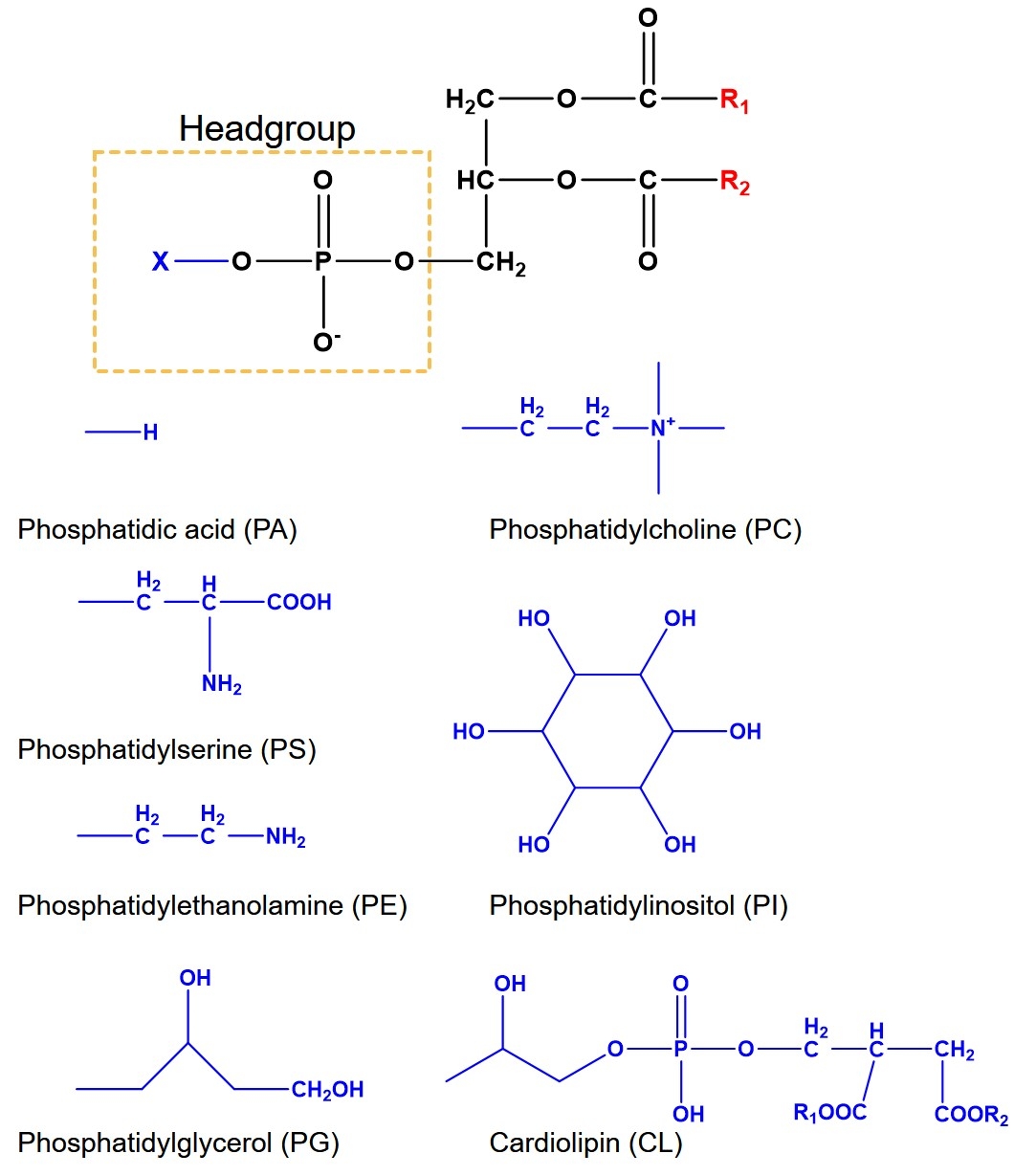It has been reported that the composition and preparation methods of liposomes have a great influence on the basic properties of liposomes, such as polydispersity index, average particle size, drug loading efficiency, zeta potential, drug release behavior, and intracellular drug uptake. Therefore, it is necessary to understand the composition of liposomes.
Liposomes are circular soft-matter vesicles formed by one or more bilayer membranes that separate aqueous media from each other. Phospholipid molecules are mainly composed of different polar head groups and two hydrophobic hydrocarbon chains. The polar group may be zwitterionic or negatively charged. Hydrocarbon chain molecules have different lengths and unsaturation.
 Fig.1 Flowchart illustrating liposome formation and encapsulation of drug molecules.
Fig.1 Flowchart illustrating liposome formation and encapsulation of drug molecules.
The chemical components of liposomes include the phospholipid molecules and/or lipids with different head groups. Different lipid components can adjust the process parameters and biopharmaceutical parameters of colloidal vesicles, thus affecting the application of liposomes. In order to prepare liposomes with expected physicochemical properties, it is necessary to select various chemical and physical parameters of phospholipids to ensure the expected optimal formulation.
 Fig.2 Space structures of different phospholipids.
Fig.2 Space structures of different phospholipids.
Phospholipids are the main component of liposomes, which are amphiphilic molecules with hydrophobic tail and hydrophilic head group. The head groups of phospholipids are hydrophilic, while their fatty acid tails are usually acyl chains and hydrophobic. The general chemical structure of phospholipids has a glycerol backbone. The hydroxyl group at position 3 of glycerol molecule is esterified to phosphoric acid, while the hydroxyl groups at positions 1 and 2 are usually esterified by long-chain fatty acids. Various types of phospholipids are widely used in the preparation of liposomes. These phospholipids can come from natural sources, semi-synthetic or fully synthetic.
 Fig.3 Structures of some phospholipids used in liposome preparation.
Fig.3 Structures of some phospholipids used in liposome preparation.
The chemical properties of phospholipids used to prepare liposomes greatly affect the properties of liposomes. The biodistribution, clearance, drug release permeability, and surface charge of liposomes always depend on the chemical properties of phospholipids. Similarly, the encapsulation efficiency, toxicity, and stability of liposomes are also affected by the types of phospholipids used in their preparation. Lipophilic hydrophilic balance has become a useful index to predict the vesicle forming ability of amphiphilic liposomes.
Sterols are components of cell membrane. Their existence in the membrane leads to changes of the fluidity, permeability, and stability of the bilayer. Cholesterol is one of the most commonly used sterols to improve the stability of liposomes. It is used because of its ability to regulate the fluidity of bilayer membranes. It also stabilizes the formulation by repelling space and preventing aggregation by electrostatic effects. Cholesterol has been reported to reduce the permeability of negatively charged, neutral charged and positively charged membranes to Cl⁻, K⁺, Na⁺ and glucose. Cholesterol can also stabilize the cell membrane and prevent the change of temperature, resulting in the decrease of cell membrane permeability when the temperature rises. The expected liposome formulation application determines the amount of cholesterol used in the formulation.
Polyethylene glycol (PEG) also plays an important role in the formation of liposomes. Its presence on the surface of liposomes can increase the circulation time of liposomes systemic circulation, protect the metabolic inactivation and degradation of combined drugs, and enhance the intracellular uptake of liposome vesicles. In addition, in order to prepare charged liposome vesicles, charged phospholipids are usually added to liposomes, such as stearyl amine (SA) and dicethylphosphate (DCP). Similarly, the addition of sphingomyelin to liposomes decreases the permeability of liposomes and increases the permeability of protons.
As a contract manufacturer of liposomes, Creative Biolabs manufactures high-end liposomes for our customers. For more details about our services, please contact us directly.
 For Research Use Only. Not For Clinical Use
For Research Use Only. Not For Clinical UseSupports
Online Inquiry

